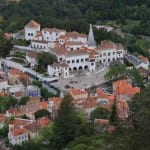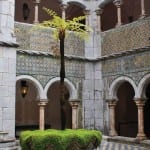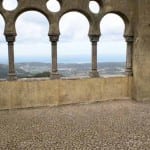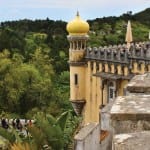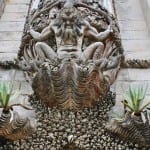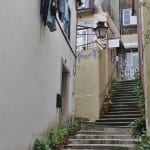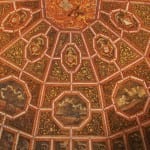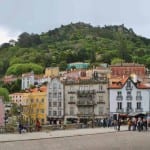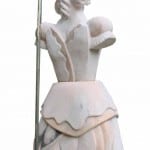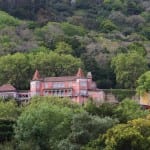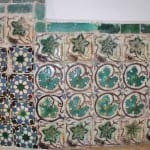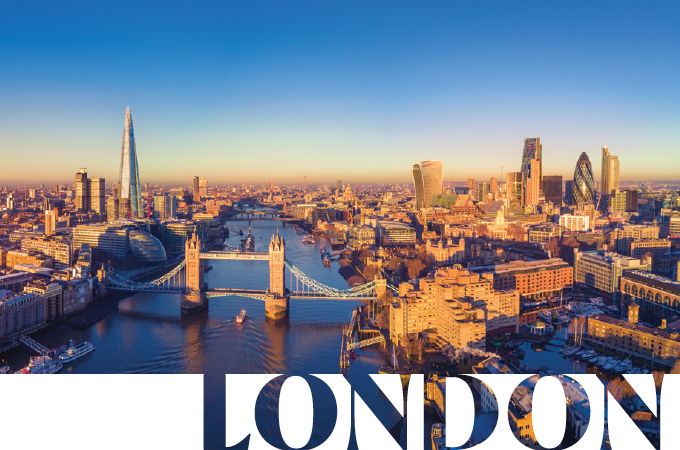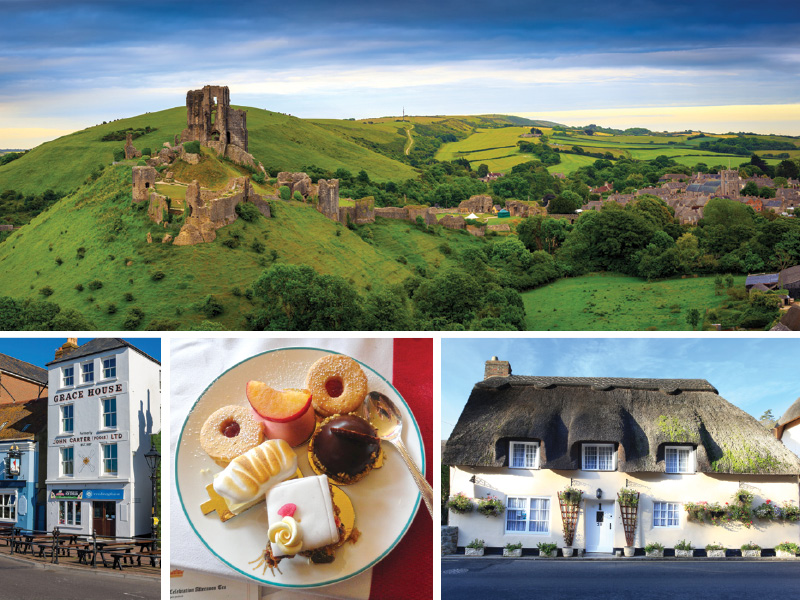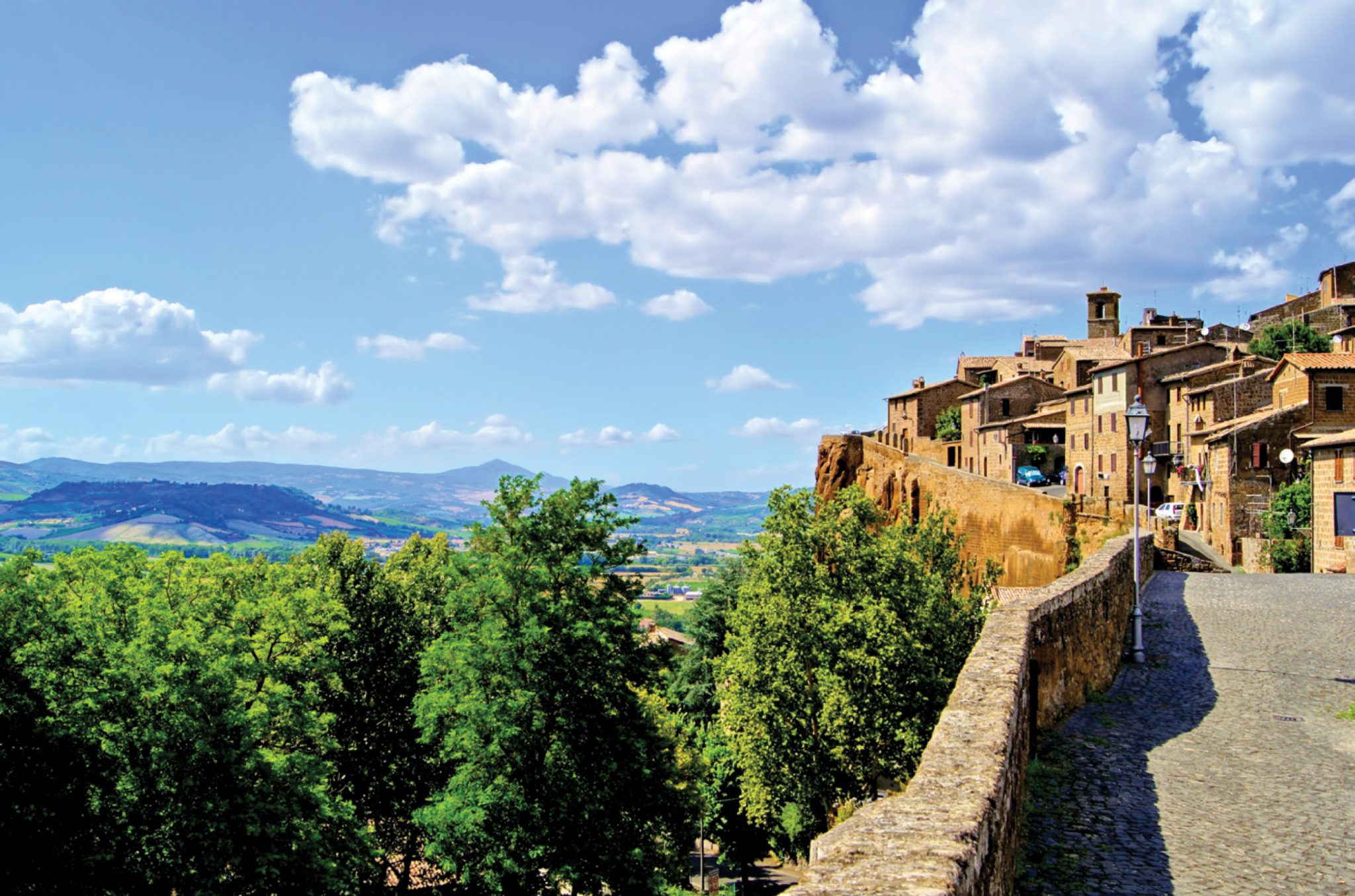It was love at first sight when I discovered Sintra, a scenic little town 30 minutes north of Lisbon. Sintra is the idyllic Portugal you see in all those guidebooks: red-tiled roofs, yellow and pink homes, medieval palaces overlooking the ocean, and a cliffside castle.
It was merely by happenstance that driver Joao Santo approached us at the Lisbon waterfront, where we found ourselves at 7 a.m—hours before our cruise ship would arrive at the port. He made us an offer we couldn’t refuse: six hours of his services for 120 euros.
Lucky for us, Lisbon was hours from waking up, so Joao headed straight for Sintra, the picturesque village of hilltop homes, as he explained that the entire city is a Unesco World Heritage Center. That means this little place frozen in time will likely be charming people for generations, because no changes can be made to alter its character. Repairs, paint and even exterior cleaning must be done with an eye to preserving the city just as it is.
When you first approach, resist the urge to stop and explore the winding lanes with their shops and cafes. Save the shopping (and café-ing) for time in-between palaces. Start with the pièce de résistance, Pena palace, a surreal vision in red and yellow high on a hill. The red part was built in the 16th century, the yellow in the 19th. Legend has it that the site was selected as early as the 12th century for a Renal Palace Chapel, after a miraculous appearance there by the Virgin Mary. A monastery and chapel were built later by King Manuel, as thanks for the success of Vasco da Gama in finding a sea route to India and its spices in 1502. Much later, in 1838, Fernando II oversaw the amazing renovation and additions that created the neo-Manueline yellow portions of the structure.
Besides its imposing presence from afar, the rooms are befitting the royalty they were created for. Marquetry, ornate plasterwork, gilding and other features dazzle visitors. King Fernando infused a Moorish aura in every nook and cranny, from minarets to Arabian horseshoe arches, in a reflection of the decorative orientalism popular in the early 19th century. Don’t miss the Triton Portico, an archway under the watchful eyes of a mythical half-man, half-fish creature. Said to be an allegory of the creation of the world, he is perched atop a gigantic clamshell, a symbol of the area’s sea dependence.
From Pena Palace it’s an easy walk to Castelo dos Mouros, or Moorish Castle, the ruins of a ninth century fortress. Set high on a hill, the massive limestone blocks that remain form a kind of staircase that visitors can climb for 360-degree views—which is exactly why it was built there: it’s a great vantage point from which to spot invasions. In addition to the thrill of standing on something built so long ago, it’s pretty cool seeing all the way to Lisbon and the Atlantic Ocean.
Back in the center of town proper, stop at a café for the area’s specialty, queijada de Sintra, cheese tarts laced with cinnamon. And give yourself a chance to browse the shops for items specific to the region, including table linens with the omnipresent rooster motif, distinctive ceramic tiles (an art form brought here by the Moors) and cork accessories. The Sintra area is the world’s largest producer of cork, harvested every nine years from the bark of trees in the region. Shops there sell wallets, purses and jewelry made from it.
Another royal structure, National Palace, sits in the heart of town and is the bestpreserved medieval palace in Portugal. It has been continuously inhabited from the early 15th through the late 19th centuries. An astounding blend of Gothic, Manueline and Moorish architecture, thanks to additions by various rulers, it has walls covered with stunning mudejar azulejos (painted tiles), Moorish arches and painted ceilings. The Sala das Pegas, or magpies room, depicts dozens of magpies on the ceiling to represent the gossip at court after King John I was caught kissing a lady in waiting. The amazing Sala dos Brasoes, or Blazons Hall, has a domed wooden ceiling with 72 gilded coats of arms representing the Portuguese royal families.
The town also has a number of magnificent gardens visitors can tour, including the mystical Quinta da Regaleira and, nearby, a roadside display of modern sculptures. There is also a hotel where Lord Byron stayed and created his poetry. Apparently the place made quite an impression on him, since he is reported to have called Sintra “the most beautiful (place) in the world,” an assessment I’m tempted to agree with.
[the essentials]
stay – Casa Miradouro is a charming country home with six rooms. A restored mansion from 1893, it offers views of the sea and the castle and has a wonderful garden setting. Lawrence’s Hotel, where Lord Byron stayed, is said to be the oldest on the Iberian peninsula. It has only 16 rooms, and they’re serviceable, not posh. But it is a historic property and conveniently located.
play – The best way to experience this little enclave is by walking. Most sites are within reach of each other, but you’ll encounter plenty of up- and downhill walking. There is a good bus system, if heavy-duty walking isn’t for you, and of course taxis or private drivers. If you have more than a day to spend here, you can tour the amazing gardens and visit the Modern Art Museum (which includes Warhol, Miro, Picasso and Pollack) and the Toy Museum.
eat – Restaurant Regional de Sintra is recommended by several tour books as serving big portions for decent prices. It’s quaint, and the owner speaks English—and it’s reportedly authentic and frequented by locals. Little cafes and bakeries offer local specialties, perfect for lunch or a respite from touring.
shop – There are lots of touristy little shops in town selling mostly the traditional textiles, porcelains and beautiful painted tiles. But don’t pass up the cork accessories if you’re at all interested in them, as you’re unlikely to find as good as an assortment outside of Sintra.
By Dorothy Weiner
Photos by Mac Weiner
Pictured: View of Unesco World Heritage Center Sintra, Portugal, with its 9th-century Castelo dos Mouros at top






